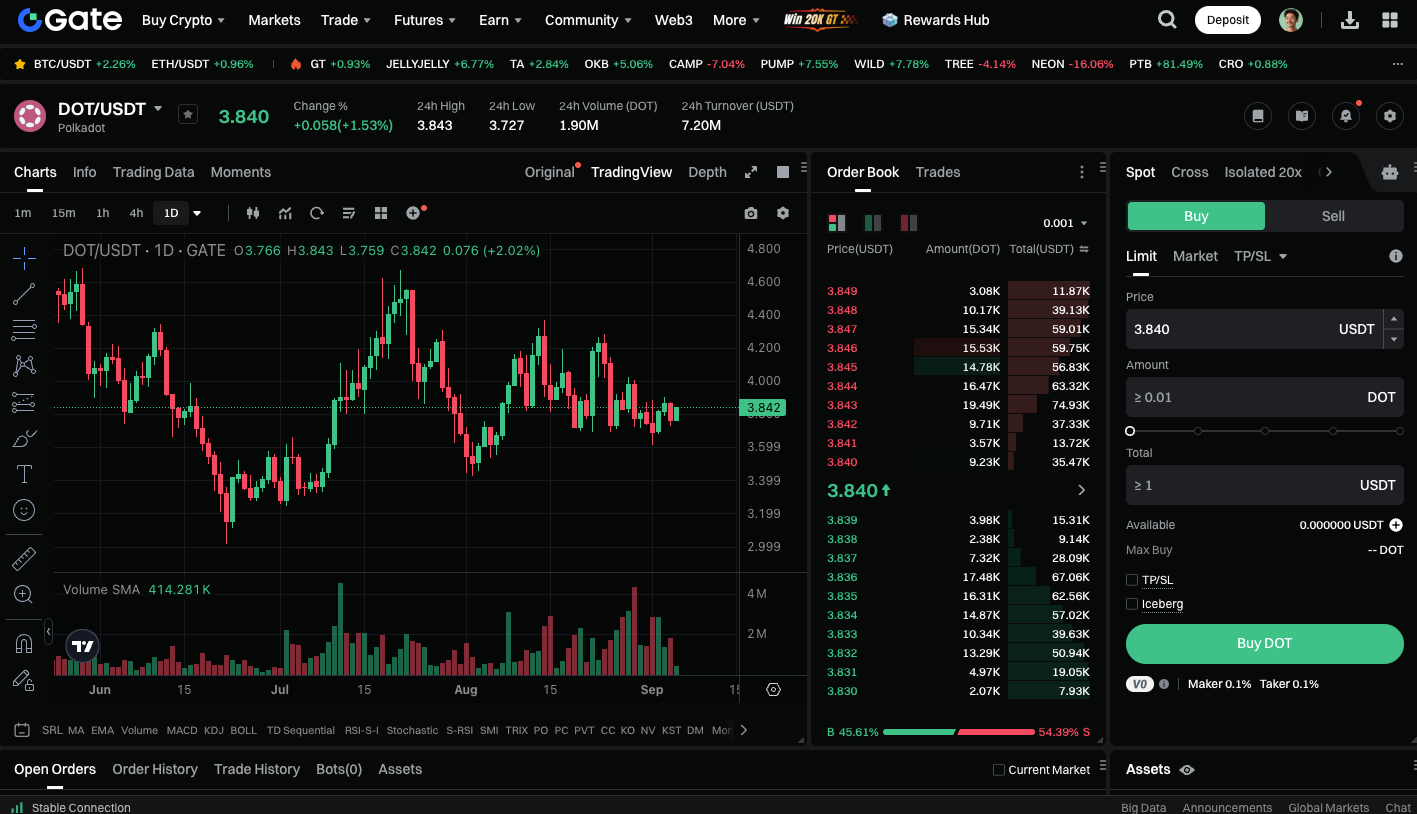What Is the Native Cryptocurrency of Polkadot?
Polkadot Overview
Dr. Gavin Wood, co-founder of Ethereum, developed Polkadot as a cross-chain protocol. Its core vision is to enable seamless communication and data sharing across different blockchains. This architecture resolves the isolation issue inherent in traditional public blockchains, making true interoperability possible in the Web3 world. Polkadot’s structure is comprised of three main components:
- Relay Chain: The central backbone of the network, responsible for consensus, security, and coordinating cross-chain operations.
- Parachains: Customizable blockchains designed for specific applications or functionalities.
- Bridges: Connect Polkadot with external public blockchains like Ethereum and Bitcoin to enable cross-chain transactions.
Within this framework, DOT drives network operation and incentivizes participants.
Polkadot’s Native Digital Asset: DOT
DOT serves as Polkadot’s native cryptocurrency. It is more than just an investment vehicle; it acts as the engine and governance instrument of the entire ecosystem. Its primary functions include:
- Governance: DOT holders propose and vote on network upgrades, protocol changes, and policy adjustments.
- Staking: By staking DOT, participants secure the network via the Nominated Proof of Stake (NPoS) consensus model and receive rewards.
- Bonding: New parachains joining the Polkadot ecosystem must bond DOT to obtain a slot, ensuring equitable resource allocation.
These core functions establish DOT as the foundational economic pillar of Polkadot.
DOT’s Three Core Functions
1. Governance
Polkadot prioritizes decentralized governance, much like other leading public blockchains. DOT holders initiate proposals and vote on key network decisions, including upgrades, protocol parameters, and treasury management. DOT is not only an investment asset but also a governance token.
2. Network Security
Polkadot uses the NPoS consensus mechanism. DOT staking underpins network security. Validators stake DOT to earn block production rights, while nominators select and support validators to share in the rewards. This system makes DOT the core of Polkadot’s security model.
3. Parachain Slot Auctions
One of Polkadot’s signature innovations is the Parachain Slot Auction. Projects that want to deploy parachains on Polkadot must bond DOT to bid for a slot. This mechanism drives demand for DOT and ensures fair, efficient allocation of network resources.
DOT’s Economic Model
DOT does not have a capped supply like Bitcoin. It follows an inflationary model that continuously incentivizes validators and network participants. Currently, DOT’s annual inflation rate stands at approximately 10%. Some newly minted DOT is distributed as staking rewards, with the remainder allocated to the treasury for ecosystem development.
This model encourages holders to participate actively in network governance and security.
DOT: Challenges and Future Outlook
DOT is central to the Polkadot ecosystem, but several challenges remain:
- Ecosystem Growth: Parachain development needs more robust, real-world applications.
- Market Competition: Competing blockchain architectures such as Cosmos and Ethereum are advancing cross-chain and multi-chain solutions.
- Regulatory Risks: Government policy changes worldwide could impact DOT’s trajectory.
With additional parachain projects launching and the Web3 ecosystem expanding, DOT is expected to become a vital asset in blockchain infrastructure.
Begin trading DOT spot: https://www.gate.com/trade/DOT_USDT

Conclusion
DOT is far more than Polkadot’s native cryptocurrency. It is the beating heart of the cross-chain ecosystem, supporting governance, network security, and parachain slot auctions. As Web3 adoption accelerates, DOT’s significance will continue to grow. For investors seeking deeper insight into Polkadot or engagement with its ecosystem, understanding DOT’s functionality and value is essential for unlocking the full potential of Polkadot.
Related Articles

2025 BTC Price Prediction: BTC Trend Forecast Based on Technical and Macroeconomic Data

Flare Crypto Explained: What Is Flare Network and Why It Matters in 2025

Pi Coin Transaction Guide: How to Transfer to Gate.com

How to Use a Crypto Whale Tracker: Top Tool Recommendation for 2025 to Follow Whale Moves

What is N2: An AI-Driven Layer 2 Solution


